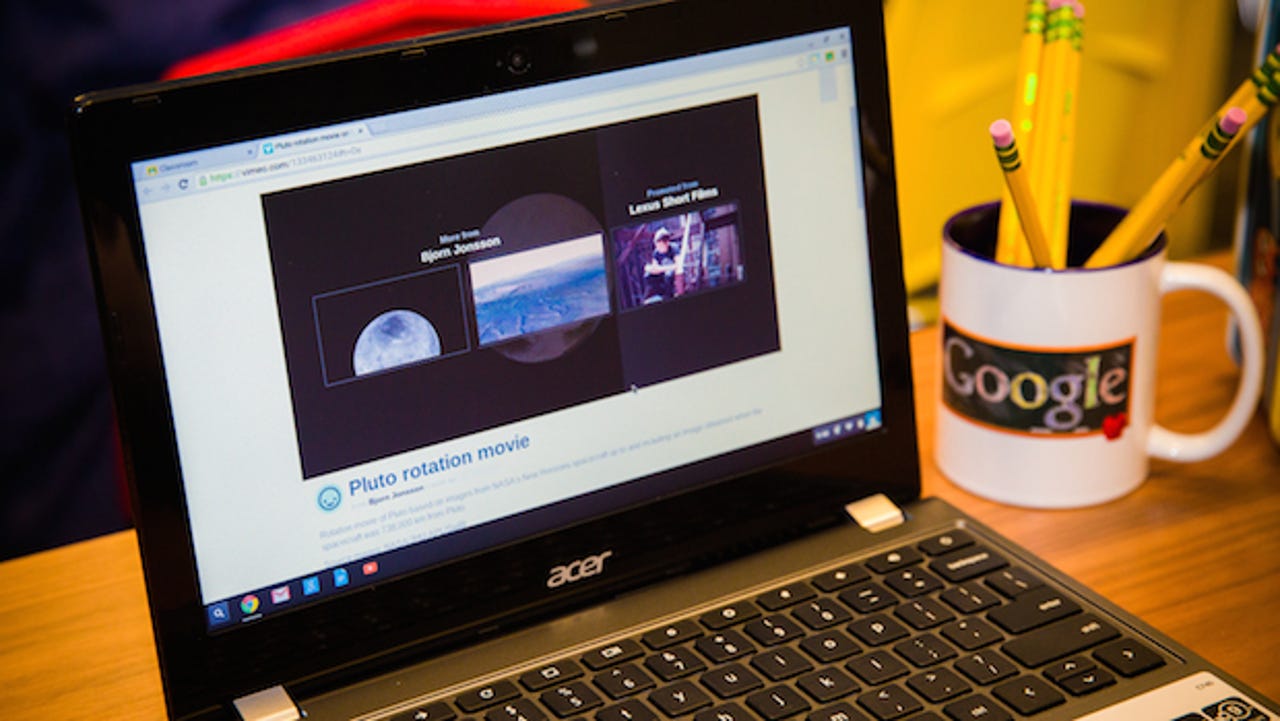Google for Education preps to go back to school with 'superpowers'

SAN FRANCISCO---With a fresh new logo in tow, Google for Education is preparing for back to school season with the next level for Docs, Classroom and more.
Members of the Google for Education product team elaborated on the new digital school supplies in a makeshift elementary school classroom decorated with sharpened yellow pencils and a bevy of tin lunch pails adorned with 1980s pop culture icons such as Pac-Man, Indiana Jones and Knight Rider at the Internet giant's San Francisco office on Wednesday morning.
"It's magical when a student can get feedback from a teacher in real-time," posited Jonathan Rochelle, director of product management for Google for Education. "Working together means more student engagement."
Over 40 million students and teachers have deployed Google Apps for Education to date with one million users subscribed in New York City alone.
With "so many schools using Google Apps and Chromebooks" now, Rochelle traced how new tech is no longer just a tool that some teachers are employing, but have now gone mainstream.
Google has already rolled out more than 100 improvements across Docs, Sheets, Slides and Forms in 2015 to date. But upgrading Google's education toolbox actually starts with a bit of late spring cleaning - a theme consistent with the tech titan's recent internal reorganization between staple Google products and those now under the larger Alphabet parent umbrella.
Rochelle explained this starts by removing "mundane" items, which he defined as things we both "hate to do" and things "computers are really good at." Auto-save on docs would be a prime example of a mundane task, Rochelle cited.
After perfecting simple tasks, Rochelle boasted the next stage moves toward gifting users with "superpowers" they wouldn't otherwise have with traditional software.
"That's Google's way of helping you get what you need as fast as possible," explained Google Docs product manager Ritcha Ranjan about the "superpowers" concept. "Whether it's a lesson or book report, we want to help you make your vision a reality in as few steps as possible."
Google is bringing what could be arguably its greatest power -- search -- to Docs through a new function called "Research." Users will be able to rely on the Google search engine for looking up facts, quotes and more without having to leave Docs.
The Mountain View, Calif.-based corporation is also building off its work in voice recognition by adding the power of voice typing, initially in 40 languages, to Docs in Chrome for note taking and writing.
"My kids are going to flip for voice typing, as did some of my colleagues at work," Rochelle quipped.
Asserting it as another example of "removing the mundane for students," Ranjan shared an observation about her son's own homework practices, touting the value of using one's voice as a form factor for data input.
"It turns a document into a conversation," Ranjan observed.
Pointing toward a common problem in cloud-based files and collaborative projects, Ranjan acknowledged the frustration of having to remember the last state of when you read a document, trying to discern who changed what and when. To remedy this, Google is adding a "see new changes" function.
Beyond tapping the search power, Google is weaving more of its Apps together to make Docs more interactive and, hopefully, productive.
For example, Google launching Explore in Sheets, a function essentially inspired by Google Analytics. Ranjan characterized Explore as "an expert analyst who will do the hard work for you," displaying charts and other visualizations that takes and packages data in a manner intended to best help the user based on the project at hand.
After launching last year, Google Classroom is also looking to eliminate mundane tasks, such as enabling teachers to be able to automatically push Web pages and digital videos to other devices in the classroom on the network for instant viewing.
"We built Google Classroom to be mission control for teachers," said Google Classroom product manager Zack Yeskel.
Classroom has seen more than 25 updates, including apps for Android and iOS alike as well as a share button for integrating other third-party tools with Classroom.
"We're trying to help people work better together," promised Ranjan. "We're trying to provide superpowers so they have advantages when creating content."
All of the new Google for Education features are rolling out worldwide today.
Image via Google
